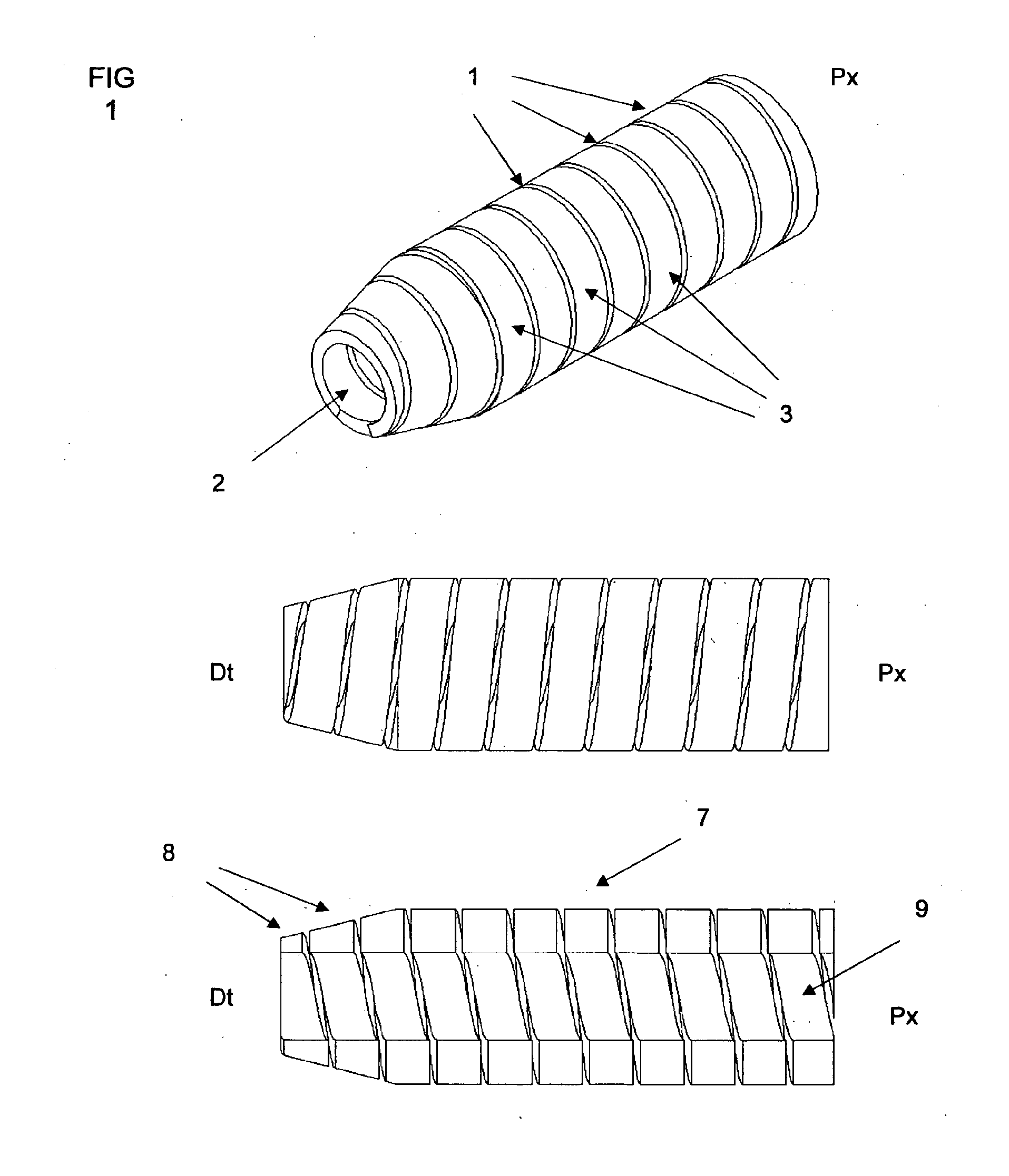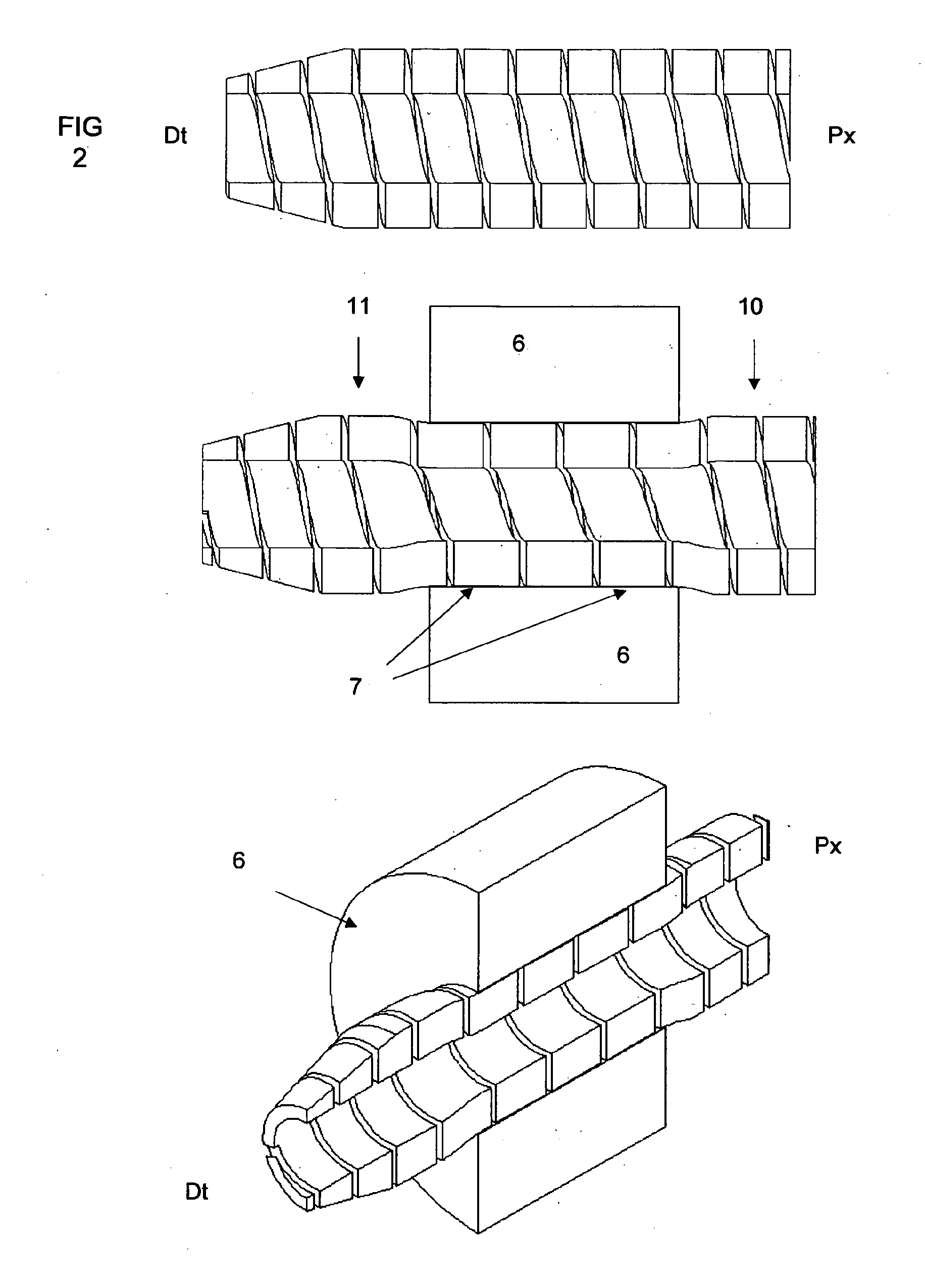One of the disadvantages with bolts as used presently is that it is estimated that approximately 50% of mechanical failures occur as a consequence of
nuts and bolts shaking loose.
If the correct rotational force is applied this can be reliable, but the correct force is very hard to apply, measure or check.
The problem with this method is the additional time, equipment, skill and expense, required to achieve the desired forces.
Unfortunately the split
washer is completely compressed in use, and therefore largely acts as a standard flat
washer, with a small anti rotation benefit only if the leading edges of the split area are sharp.
Loctite™ is anaerobic glue which can be effective in binding threads but is very sensitive to cleanliness and temperature, somewhat messy to use, requires a close tolerance between the cooperating elements
Using a pair of threaded nuts is a strategy used sometimes. This improves the vibration resistance but is cumbersome slow and adds expense.
Additionally it only improves vibration resistance a little as the axial stretch of the
fastener still determines the
efficacy of the thread friction engagement (now on two nuts).
This improves the vibration resistance but is cumbersome slow and adds expense.
This device does not have the strength of even conventional bolts.
This is a means to dampen vibrations, not to provide a strong secure fastening.
The cylinder is not fixed to a head as such and as a consequence of the split along its length provides a flexible, but not very strong fastening device.
While this is useful with amorphous products such as mats, this can not be used where structural strength is required.
The round wire of the ‘corkscrew’ cannot readily cooperate with a
solid object nor provide the strength, grip or fine tolerances that a simple threaded bolt can.
There are several significant problems in that the cost of the fasteners and the cost of installation is a significant cost in making a new plane and then the plane needs to be able to be inspected and maintained in a
working life of often in excess of 30 years.
Indeed for maintenance and inspection of plane substructures, the relatively permanent nature of rivets is a problem, as pop rivets as available now require tedious and costly drilling out, and then the reinsertion of a new pop
rivet.
Where ever fasteners are used the same challenges are present: Fasteners usually need to be affordable, easy to insert / use, secure, vibration resistant,
corrosion resistant, and often able to be removed if required.However there are also less obvious “fasteners” that are actually connection details / sub-parts of a larger item.
However there are still a number of problems:1. The bit is prone to torque out—where the drive bit disengages from the
fastener recess, as the power is applied,2. The bit does not hold the fastener and the fastener falls out of the bit before it can be used,3. The recess in the fastener is easily compromised by paint and / or
corrosion plating,4. The recess in the fastener is expensive to form.
Yet another fastener problem is in the area of pop-rivets which are slow to insert, relatively expensive, and can not be removed easily, or reused.
Bio compatible
metal alloys (or composites) can be used for pins, screws, plates, ball joints / sockets, implants, and the like, but there are un-solved issues with the prior art.
These relate to the relative inflexibility of the parts, and the challenges fitting to the existing organic
bone structure:1. Materials such as the
titanium alloys used in orthopaedic and dental reconstructions are particularly strong, but therefore relatively inflexible.
Failure rates of about 5% are quoted, mainly due to failure of
osseointegration.
But there is a significant problem in the
delay in completing the procedure.An increasingly common strategy to preserve bone and reduce treatment times includes the placement of a
dental implant into a recent
extraction site.
However, the chances of the
implant failing in these cases is increased.When an
implant is placed either a
healing abutment, which comes through the mucosa, is placed or a ‘cover screw’ which is flush with the surface of the
dental implant is placed.
Generally the above prior art
dental implant processes are overly dependent / reliant upon both the speed and success of osseointergration process.
 Login to View More
Login to View More 


